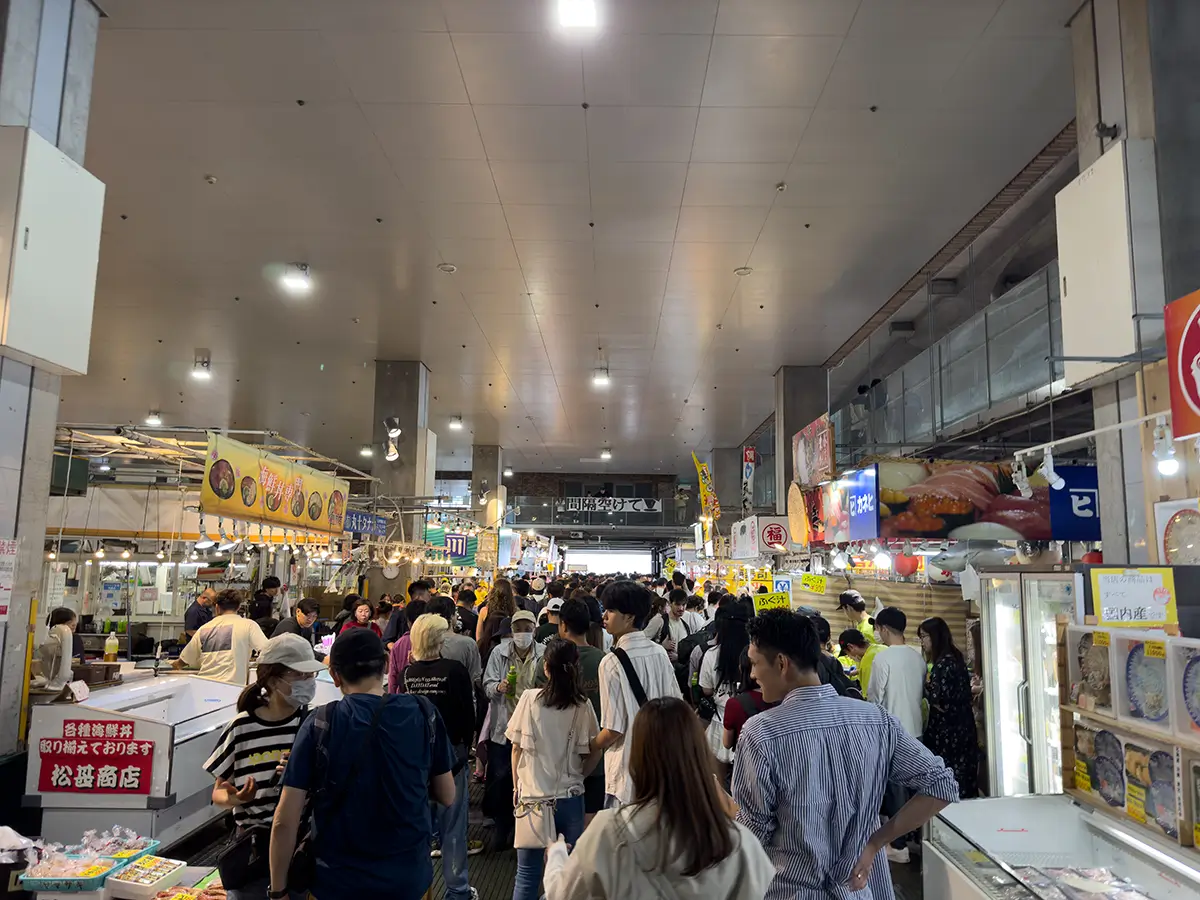While I’ve visited Japan many times, this was my first adventure to Kyushu. For the best experience in Kyushu, I’d suggest renting a car rather than taking buses. The island offers breathtaking natural landscapes, from active volcanoes to hot springs, but most scenic spots are not easily accessible by public transportation.
Day 1: From Fukuoka Airport to Hakata

After a 2-hour flight, I arrived at Fukuoka International Airport. While I initially planned to take the subway to Hakata, I discovered that the subway station was in the domestic terminal, requiring a 10-minute shuttle bus ride. Looking at the crowded bus stop and uncertain about the waiting time, I opted for a taxi instead.

During the taxi ride, the driver asked me something in Japanese that I couldn’t understand. I later realized he was asking whether I wanted to take the highway route. As a first-time visitor unfamiliar with local roads, I simply nodded in agreement. He took the highway, adding 600 yen to the fare. In hindsight, I learned that taking local roads would have been just as quick during off-peak hours, given the short distance between the airport and Hakata.
Japanese taxis are equipped with card readers that accept American Express. My fare came to around 3,700 yen, and it saved me considerable time and the hassle of dragging my luggage around.

After checking into the hotel, I headed to Au Goût du Jour Merveille Hakata, a French restaurant where I had made a reservation through Pocket Concierge a month in advance, as American Express offered a cashback of 20,000 yen. Their chef shops at local Kyushu markets daily for fresh vegetables and seasonal fish. Each dish reflects their commitment to using local ingredients, bringing a farm-to-table philosophy to French cuisine. The prices are quite reasonable for the quality they offer.

According to Tabelog, the restaurant has been selected for Tabelog French WEST “Hyakumeiten” in both 2021 and 2023. The food was decent, though the service could have been more polished. The food was great, but the service didn’t quite match the typical Japanese hospitality standards. Despite being the only customers in the restaurant, the server didn’t introduce any of the dishes, forcing me to ask about each course as it was served. Water refills also had to be requested rather than being provided proactively.
Day 2: Northern Kyushu
Early in the morning of Day 2, we went to Toyota Rent A Car, which is located near the Fukuoka International Airport. We chose this location as it offered the widest selection of vehicles among all Toyota rental branches in the area.

As a Toyota owner back home, I felt comfortable driving in Japan right away, despite the steering wheel being on the right side instead of the left. The familiar Toyota layout and controls made the transition much easier.
They offer reasonable rental prices with additional discounts available for members. The cars are well-maintained, and the staff provide excellent service, including clear English instructions for international drivers.
For my 8-day rental, I paid approximately 78,000 yen (around $520 USD), which averaged out to 9,750 yen per day, including insurance. The total cost, including ETC (electronic toll collection), fuel, and parking fees, came to approximately 100,000 yen (about $670 USD). Having a rental car provided more flexibility and convenience than public transportation, while potentially being more cost-effective.
Karato Fish Market

Karato Market in Shimonoseki, Yamaguchi, is a lively fish market where fishermen sell fresh seafood directly to customers. Karato Market’s food court is only open from Friday to Sunday and on public holidays. On weekdays, only wholesale shops are open for business.

If you’re a tuna lover, I highly recommend Maguro Tonya Niida Shouten, where I worked at their Taiwan branch as a part-timer during my college years. Although that branch has since closed and the owner returned to Karato Market, I was hoping to meet him on this trip. Unfortunately, he wasn’t there when we visited.
Maguro Tonya Niida Shouten specializes in tuna dishes, offering a wider variety of tuna sushi than other shops in the market. The quality is excellent and the prices are reasonable. If you visit Karato Market, I consider it a must-try destination.
After enjoying the food at Karato Market, we decided to take a stroll around Mojiko, a historic port area.
Moji Port

Moji Port is a historic port district in Kitakyushu City. It was one of Japan’s three major ports and a bustling international trading hub during the late 1800s to early 1900s.
We only had about an hour to explore since we needed to drive to Oita afterwards. To truly appreciate what Moji Port has to offer, you should plan to spend at least 2-3 hours here.